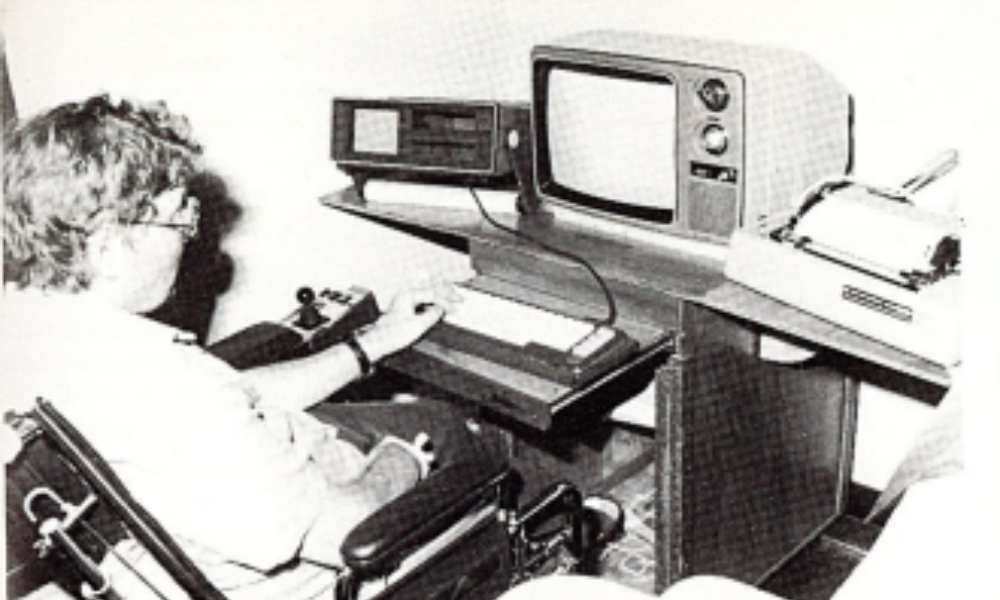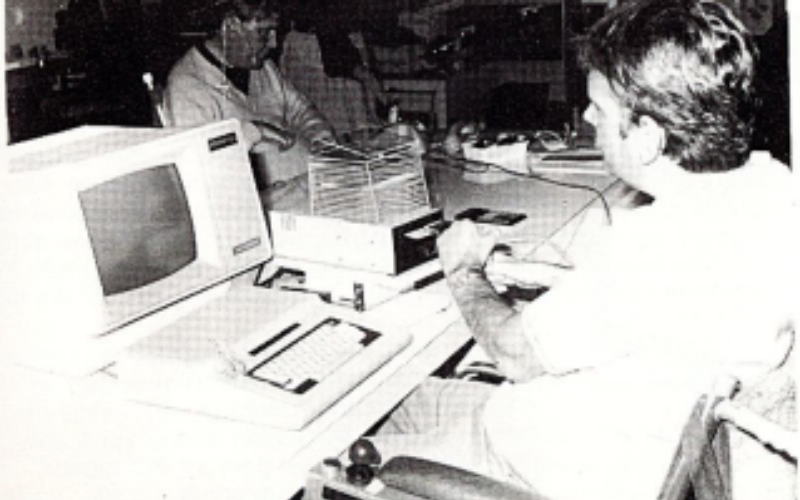Custom Workstation for More Control 🖥️ | 50 Years of Clever Ideas #4
Computers were once enormous machines that required entire rooms—complete with air-conditioning and dust control—to operate efficiently. Over time, they became more compact, user-friendly, and less sensitive to their surroundings. Today, computers are not only more powerful but are capable of supporting a wide range of external devices, such as printers and disk drives. As a result, the space required to accommodate them has grown once again—though not quite to their original footprint.
For people with disability, careful planning of a computer workstation can make all the difference in accessibility and ease of use.
One such example was a solution created by a Freedom Solutions (formerly TAD) volunteer for a client with incomplete quadriplegia. The goal was to design a compact and highly functional workstation to support the client’s computer use, all while accommodating his wheelchair and physical needs.
The final setup fit comfortably on a 1.7 x 0.9 metre table, with space underneath to allow the client’s wheelchair to roll in close. The custom-built equipment included:
- A monitor stand that allowed the keyboard to slide underneath when not in use, freeing up valuable workspace.
- A printer stand supported on two adjacent edges, creating a space beneath for storing handbooks. This stand also clamped to the table for added stability.
- A turntable for the twin disc drive, enabling the client to easily reach the back of the drive to access several required switches.
- A pair of adaptive disc grippers, designed to help the client handle floppy discs. Though the client lacked pinch grip, he was able to bring his hands together. The grippers featured thumb rings for control and were spring-loaded to allow a disc to be held securely—even one-handed.



The client had also been using a standard floppy disc storage system, but accessing discs involved significant difficulty. Taking a disc standing on edge and rotating it into a horizontal position for insertion was an awkward, physical challenge.
To solve this, the volunteer designed a custom disc filing cabinet. Each floppy disc lay flat on its own individual shelf within the cabinet, which was mounted above the disc drive. This positioning made retrieving and inserting discs far simpler and more ergonomic for the client.
This project highlights how custom assistive technology—even when seemingly simple—can make a world of difference in promoting independence, accessibility, and dignity for users with physical disability.
